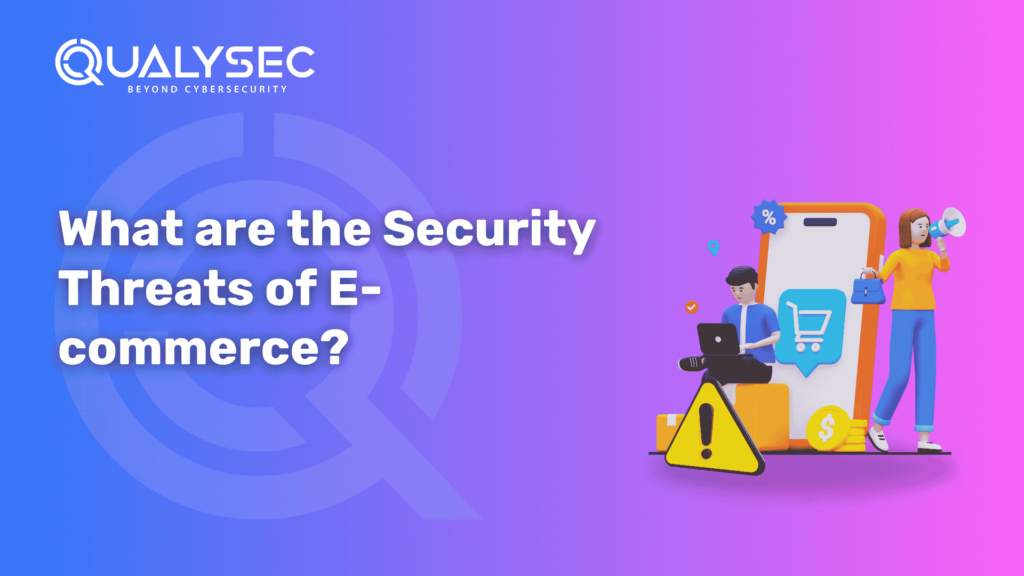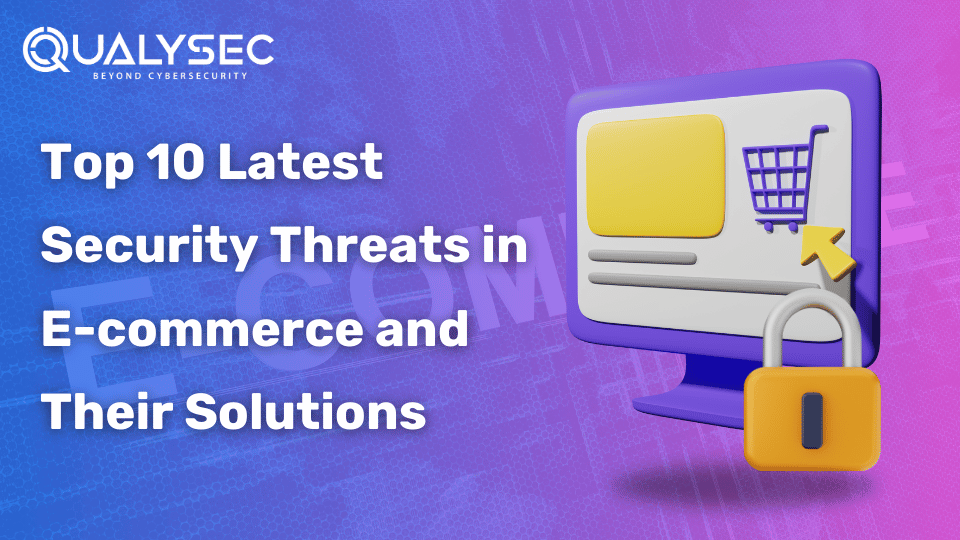What are the Security Threats of E-commerce?
It is an undeniable reality that security threats in e-business are wreaking havoc in online transactions. The industry suffers from as much as 32.4% of all successful threats every year. Hackers typically attack e-commerce store admins, users, and employees with a variety of malicious methods. There are simply too many e-commerce security threats and scams that are running rampant in the industry these days. Here, in this blog post, we have attempted to enumerate the prevalent threats your e-commerce encounters and how you can avoid them. If you have already been a victim of being hacked by credit card scams, scamming, phishing, bad bots, DDoS attacks, or other cyber attacks, you can acquire a full malware removal now with Qualysec Security. Top 10 E-commerce Security Threats 1. Financial frauds Since the initial online companies joined the internet world, financial scammers have been causing headaches for businesses. Different types of financial frauds are found in the world of e-commerce, but we are discussing here the two most frequent security threats in e commerce. a. Credit Card Fraud It occurs when a cybercriminal purchases goods on your online store using stolen credit card information. In most cases, the shipping and billing addresses are different. You can identify and prevent such activities in your store by having an AVS – Address Verification System installed. Another type of credit card fraud is when the fraudster steals your identity and personal information to allow them to obtain a new credit card. b. Fake Return & Refund Fraud The rogue players execute unauthorized transactions and wipe out the evidence, which inflicts significant losses upon businesses. Certain hackers also undertake refund fraud, in which they place fraudulent return requests. To defend your site from such advanced e commerce threats, incorporating up-to-date fraud detection software that is up-to-date into your online platform can have a massive impact on improving your capability for identifying and halting fraudulent operations in real time. 2. Phishing Some online stores have reported getting notifications or messages from hackers who impersonate the actual owners of the legitimate stores. Such scammers put up fake copies of your site pages or even a well-established website to get the users to believe them. For instance, view this photo below. A harmless and convincing email from PayPal requesting to send information. The 2017 EITest is one more fine example of such nefarious campaigns. If the clients do not realize and fall into the trap, surrendering their sensitive personal data such as login credentials to them, the hackers quickly proceed with scamming them. 3. Spamming Some spam players may send malware links through email or social media mailboxes. They can also insert these links in their comments or messages on blog comments and contact forms. When you click on them, you will be redirected to their spam sites, where you might become a victim. 4. DoS & DDoS Attacks Most online stores have lost money as a result of interference in their website and total sales owing to DDoS (Distributed Denial of Service) attacks. What occurs is that your servers are bombarded with requests from numerous untraceable IP addresses that make them crash and unavailable to your store visitors. 5. Malware The attackers can create an offending software and install it on your IT and computer systems without you even knowing. Offending programs like spyware, viruses, trojans, and ransomware fall under this category. Your customers’, admins’, and other users’ systems can have Trojan Horses installed in them. The offending programs are capable of copying any sensitive information that may exist on the compromised systems and could even infect your site. 6. Exploitation of Known Vulnerabilities Attackers are waiting for some weaknesses that may be present in your e-commerce site. Mostly, an e-commerce site is weak to SQL injection (SQLi) and Cross-site Scripting (XSS). Let us briefly discuss these weaknesses: a. SQL Injection It is an insidious method wherein a hacker is attacking your forms of query submissions to be able to get access to your backend database. They taint your database with a contaminated code, they harvest information, and then eliminate the track. b. Cross-Site Scripting (XSS) The attackers may inject a malicious JavaScript code into your online store to attack your online customers and visitors. These codes may read your customers’ cookies and calculate. You can use the Content Security Policy (CSP) to avoid such attacks. “Also, Read our guide to E-commerce Penetration Testing: Securing Online Businesses” 7. Bots Some hackers create special bots that can scrape your site to obtain details regarding inventory and prices. The hackers, typically your rivals, can then make use of the information to decrease or change the prices on their websites to reduce your revenue and sales. 8. Brute force The internet world also has attackers who can apply brute force to your admin page and break your password. Such scam programs access your site and attempt thousands of combinations in hopes of getting your site’s passwords. Always use strong, complex passwords that cannot be easily guessed. Also, always update your passwords regularly. 9. Man in The Middle (MITM) A hacker might intercept the conversation occurring between your e-commerce site and a customer. Walgreens Pharmacy Store has suffered through that sort of an event. If the user is linked with an unsecure Wi-Fi or network, then those kinds of attackers might make the most out of that. 10. e-Skimming E-skimming is attacking a website’s checkout pages with malware. The goal is to steal the clients’ payment and personal information. Are you an e-commerce entrepreneur? Don’t underestimate the gravity of such e-commerce security threats. “You might like to explore our recent post on What Is Web Security In E-Commerce? Latest Penetration Testing Report Download E-commerce Security Solutions that can ease your life 1. HTTPS and SSL certificates HTTPS protocols not only secure your users’ sensitive information but also improve your website rankings on the Google search page. They achieve this by encrypting data transfer between the servers and





